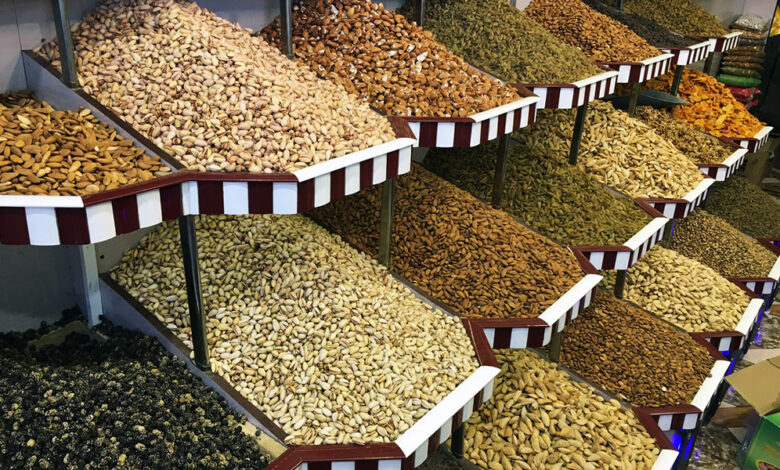Afghanistan’s Dried Fruit Export Growth

Afghanistans agricultural sector has shown significant progress in recent years, with dried fruit exports reaching $518 million over the past ten months. This growth represents an important milestone for the countrys economy, demonstrating resilience in the agricultural sector and expanding market opportunities for Afghan farmers. This report examines the factors contributing to this success, government initiatives supporting the industry, challenges faced, and future prospects for Afghanistans dried fruit exports.
Background and Importance of Dried Fruit Industry
Afghanistan has long been recognized for producing high-quality dried fruits, including almonds, pistachios, walnuts, figs, raisins, and apricots. These products are highly valued in international markets due to their organic quality, unique taste, and traditional drying methods that preserve their nutritional benefits. The countrys favorable climate and fertile land make it an ideal environment for cultivating these crops, contributing to Afghanistans reputation as a leading producer of dried fruits.
Export Growth and Market Expansion
Export Statistics and Revenue Generation
According to the Ministry of Commerce and Industry, Afghanistan exported dried fruits worth $518 million in the last ten months, reflecting a steady increase in global demand for Afghan agricultural products. These exports contribute significantly to the countrys GDP and provide employment to thousands of farmers and traders.
Key Markets for Afghan Dried Fruits
Afghanistans dried fruits are exported to several countries, with major markets including:
India: A primary importer of Afghan dried fruits due to high demand for premium-quality nuts and raisins.
Pakistan: A key trading partner with strong trade relations in the agricultural sector.
China: Growing demand for organic and natural food products has increased Afghanistan’s exports to Chinese markets.
United Arab Emirates (UAE): A major hub for Afghan dried fruit re-exports to other international markets.
European Union (EU): Increased interest in organic food products has opened opportunities for Afghan dried fruit exporters.
Government Initiatives to Boost the Dried Fruit Industry
Recognizing the economic importance of dried fruit exports, the Afghan government has introduced various initiatives to support farmers and traders. These initiatives include:
1. Financial Assistance and Subsidies
The government has provided financial support to farmers to improve production techniques and adopt modern processing methods. This assistance has helped increase productivity and maintain high-quality standards for exports.
2. Infrastructure Development
Investments in storage facilities, cold chains, and transportation infrastructure have improved the supply chain, reducing post-harvest losses and ensuring that dried fruits reach international markets in optimal condition.
3. Trade Promotion and Market Access
Afghan dried fruits have been showcased in international trade fairs and exhibitions, increasing global awareness and demand. Additionally, trade agreements have been negotiated to facilitate smoother export processes.
4. Simplification of Export Procedures
The government has taken steps to reduce bureaucratic hurdles in export documentation, making it easier for businesses to trade dried fruits globally.
Challenges in the Dried Fruit Export Sector
Despite the positive growth, Afghanistan’s dried fruit export industry faces several challenges, including:
1. Logistical and Transportation Issues
• Limited access to international shipping routes poses a challenge for exporters.
• Border closures and trade restrictions with neighboring countries impact the smooth flow of goods.
2. Climate Change and Environmental Concerns
• Unpredictable weather patterns, droughts, and water shortages affect crop yields.
• Sustainable farming practices need to be adopted to combat the long-term effects of climate change.
3. Competition in Global Markets
• Afghanistan faces competition from other dried fruit-producing countries such as Iran, Turkey, and the United States.
• Maintaining product quality and competitive pricing is essential for sustaining growth.
4. Need for Advanced Processing Facilities
• The lack of modern processing and packaging facilities affects the quality of Afghan dried fruits.
• Investment in value-added processing can increase the competitiveness of Afghan products in global markets.
Future Prospects and Recommendations
Given the steady growth of Afghanistan’s dried fruit exports, the industry has the potential to expand further with strategic planning and investment. Key recommendations for ensuring continued success include:
1. Strengthening Trade Relations
• Expanding diplomatic efforts to open new markets in Europe, North America, and the Middle East.
• Negotiating favorable trade agreements with key importers.
2. Enhancing Processing and Packaging Standards
• Encouraging private sector investment in modern processing facilities.
• Implementing global quality standards and certification to enhance competitiveness.
3. Promoting Sustainable Agriculture
• Encouraging the use of modern irrigation techniques to counter water shortages.
• Training farmers in sustainable farming methods to improve yield and quality.
4. Improving Logistics and Supply Chain Management
• Expanding transportation networks and trade routes for efficient export operations.
• Investing in cold storage and warehousing facilities to maintain product freshness.
Conclusion
The $518 million revenue from dried fruit exports demonstrates the resilience and economic potential of Afghanistan’s agricultural sector. While challenges remain, continued government support, investment in infrastructure, and market expansion strategies can further strengthen Afghanistan’s position in the global dried fruit industry. By addressing key obstacles and capitalizing on emerging opportunities, Afghanistan can sustain and enhance its growth in this vital sector, contributing to long-term economic stability and prosperity.
